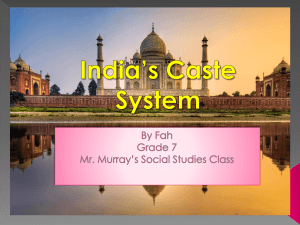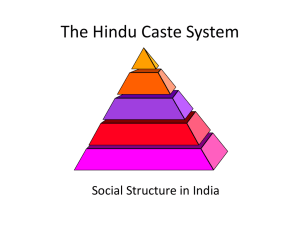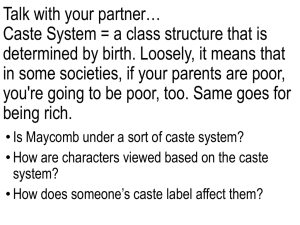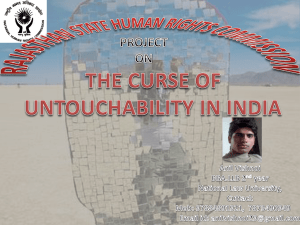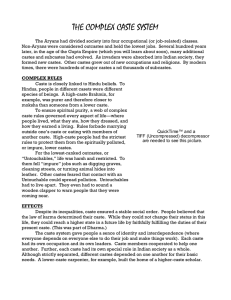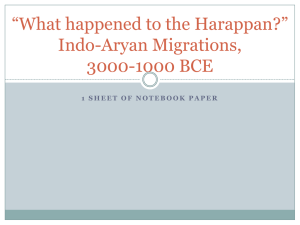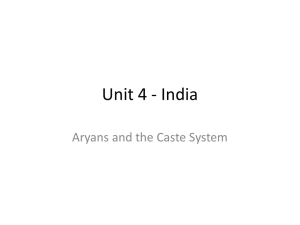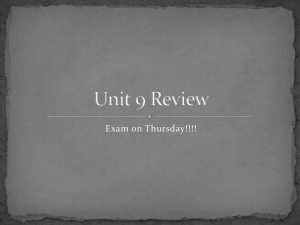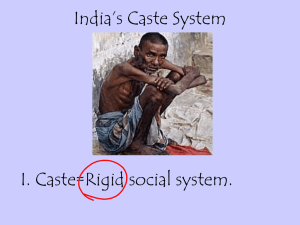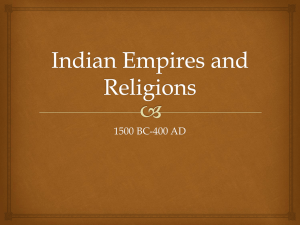The Caste System
advertisement
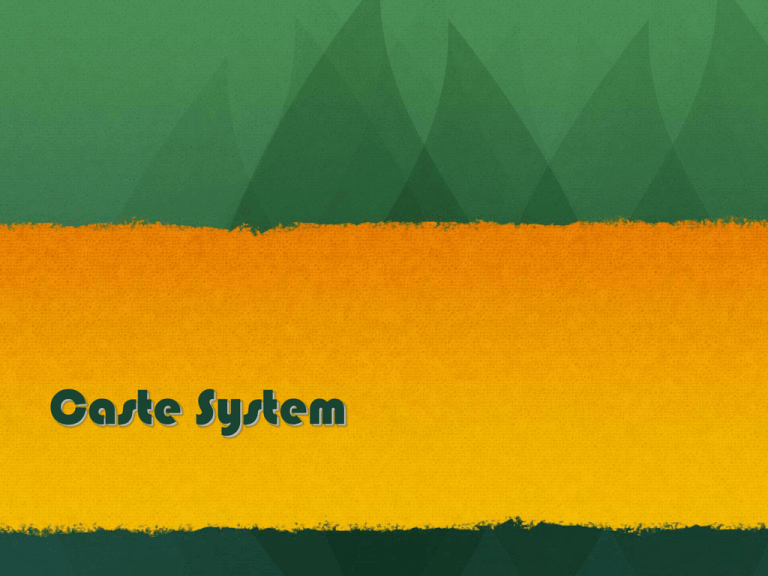
Caste System Origins of the Caste System Scholars differ on origins, but agree that it is an ancient institution Historical Origins: Complexion and occupations of the Aryans who invaded India around 1500 B.C. Varna (“color”): differences in skin tone between darker indigenous peoples and fairer Aryans Origins of the Caste System Religious sanction: Traditional Hindu view: humans were divided on the basis of their intrinsic qualities Rig Veda: mythical origins from the ritual sacrifice of the primeval male, Purusha: Brahmins came from his face/mouth Kshatriyas from his arms Vaisyas from his thighs Sudras from the soles of his feet References in the ancient epics of the Ramayana and Mahabharata Detailed description in the “Laws of Manu” (700 C.E.) The Caste System Four distinct classes: Brahmin: priests Kshatriya: warriors and administrators Vaisya (“The People”): Producers: farmers, merchants, artisans Sudra: servants and laborers The Caste System Subdivided into over 3,000 categories Correspond to different occupations for men For women, caste determines who they can marry “Outcastes”: considered outside of society; includes the “Untouchables,” who only recently have gotten some legal rights Based on heredity; determined by karma The Four Castes Brahmin Kshatriya The Four Castes Vaishya Shudra Justification for the Caste System Age when antiseptics and antibiotics didn’t exist Practical to have one group do the dangerous work of carting away carcasses and making leather from animal hides Theory that the “untouchable” caste developed immunities over generations Other castes had to avoid them purely for health reasons Caste evolved to serve the same purposes that workers’ guilds served in medieval times, and unions are supposed to serve today: Protected workers from unfair competition Preserved the knowledge of each community Still, many Hindus today feel that it is morally and ethically without any justification Caste System Over Time Attempts of other religions (including Buddhism, Christianity & Judaism) to eradicate the caste system did not succeed Industrial Revolution and urbanization : brought possibility of social mobility Centuries later, it was adopted by the British rulers in India The British later passed laws designed to aid the lower castes Could not find a lasting solution since they saw themselves as a privileged ruling class Constitution of India (1949): guarantees the right of all citizens to justice, liberty, equality, and dignity The Caste System Today Dalits: 18-20% of India’s population Christian population of India: 3% Christians who are Dalits: 50% Marriage across caste lines is still taboo for some families India’s rapid economic expansion and booming high-tech sector is chipping away at the reservation of well-paying jobs for some and menial jobs for others Hiring of thousands of workers for high-tech firms International companies hire on the basis of merit Number of Dalit entrepreneurs has increased w/ the advent of a market economy The Caste System Today Economists describe “two Indias” – one rich and one poor. India’s caste system can no longer fully contain the socioeconomic change the country is undergoing. Different religions, occupations, and levels of education are no longer correlated with caste Limited access to education and resources is still a problem for some Dalits, although missionary schools and governmentsponsored education have helped
